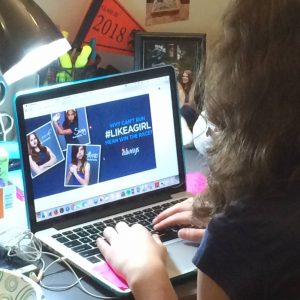
We all know that trying to find a topic for a Junior Paper can feel like dragging your feet through quicksand. So when you eventually settle on the right topic, you feel like running to the top of a hill and shouting, “I’m unstoppable!”
…That is, until you stop and ask yourself, “Now what?” This is precisely where I found myself after determining that my Junior Paper for the Sociology Department would focus on gender progressive advertisements. Sure, I had finally discovered a topic that I was passionate about, but how could I transform that into a a reasonable research question?
Fortunately, there’s a convenient tool to help you with this next step. In The Craft of Research, a required reading for my Junior Seminar, Wayne C. Booth, Gregory G. Colomb, and Joseph M. Williams break down the notorious research question into three simple parts (if you’re familiar with the Magic Thesis Statement, a tool to craft a thesis for an essay, then you probably know where I’m going with this!). According to these three authors, an easy way to manage your research question is to set it up as follows: “I am trying to learn about (working on, studying) ______________, because I want to find out who/what/when/where/whether/why/how______________, in order to help my reader understand how_________________.
In this format, the first blank is for the topic. If you haven’t already chosen a topic, some questions to consider are: What concepts interest me? What do I want to learn more about? The next blank focuses on what you specifically want to find out about your topic. In this case, it can be helpful to think about why you’re pursuing your idea and which important points you wish to understand about the topic. Finally, filling in the first two blanks will help you fill in the third–the wider significance of your research. Perhaps the hardest part of the research question, another way to determine why this research is important is to ask yourself: What issues does this topic bring up? Why should readers care about this research?
After determining that I wanted to study progressive feminist advertising campaigns, I realized that I wanted to learn what kind of impact these supposedly feminist ads had on women’s self-esteem and self-views. As for the wider significance, I wanted to help my readers better understand whether these advertisements are a positive media representation of women or just a faux feminist trend encouraging women to buy products. As a result, my “Magic Research Statement” turned into the following: I am studying progressive feminist advertisements, because I want to find out how they impact women, in order to help my readers understand how this type of media may or may not positively influence viewers’ understanding of women.
When you take the time to craft a”Magic Research Statement,” this seemingly small sentence can set you up with a great foundation for your upcoming work. The three components within the statement will act as guidelines for choosing your secondary sources, picking relevant key terms, finding related topics, and deciding the best format for conducting your research. Additionally, crafting your Magic Research Statement doesn’t have to be done on your own! Reaching out to your professors can be a great way to get more information and advice on every step of the research process. Though all of this may sound like a lot of hard work (which, admittedly, it is), starting out with a strong foundation will make working on your Junior Paper that much better and worthwhile!
–Taylor Griffith, Social Sciences Correspondent

